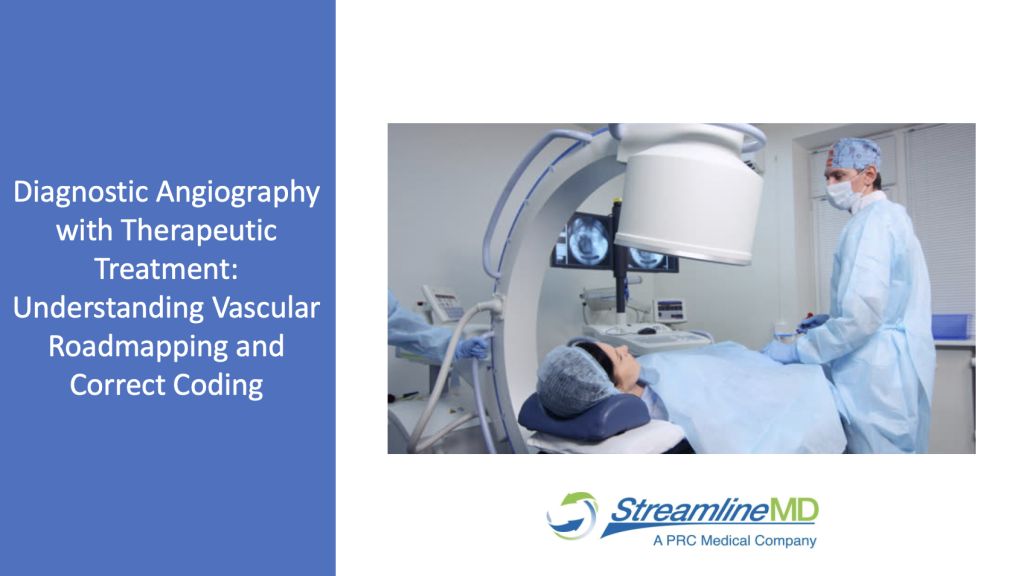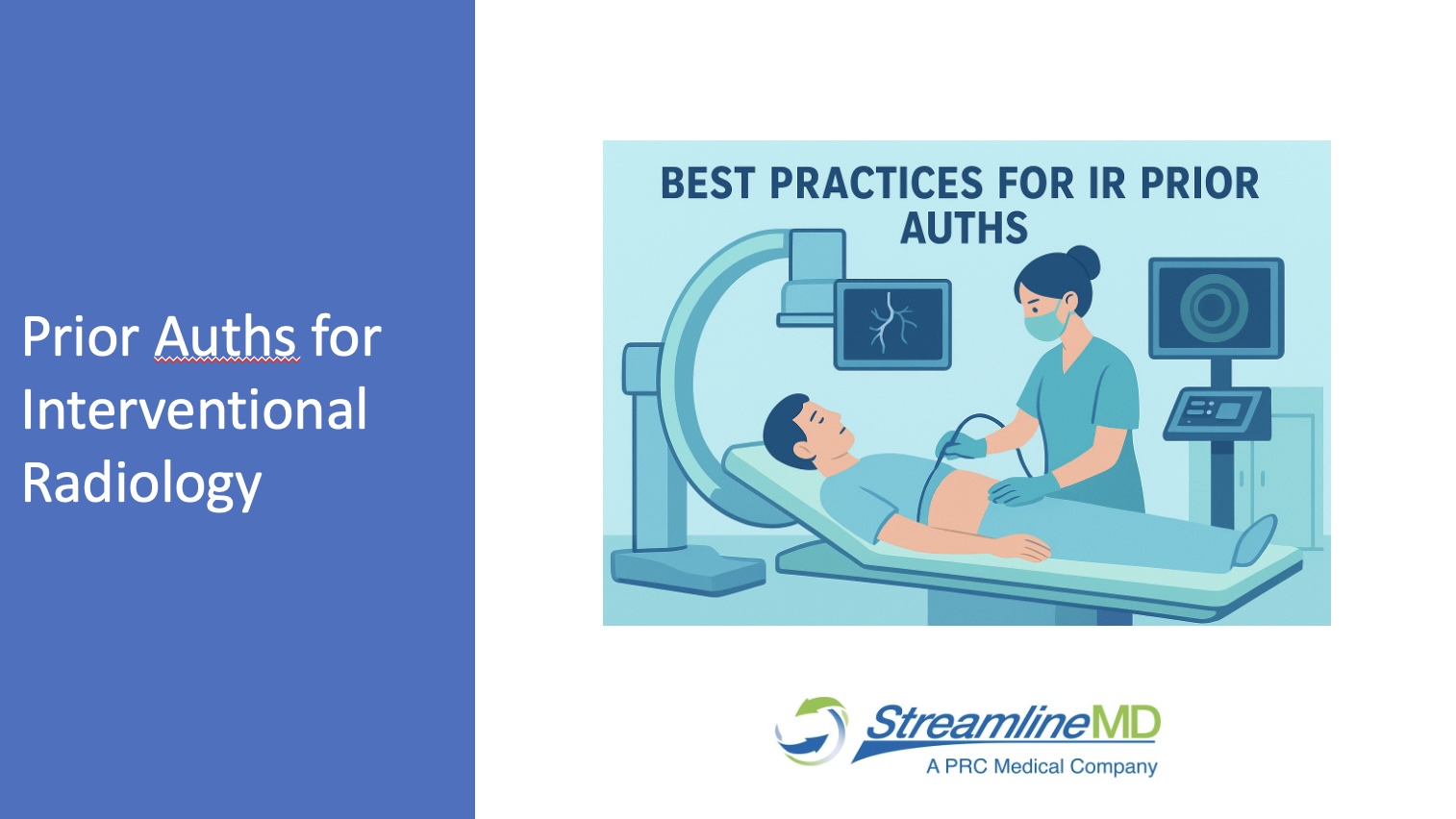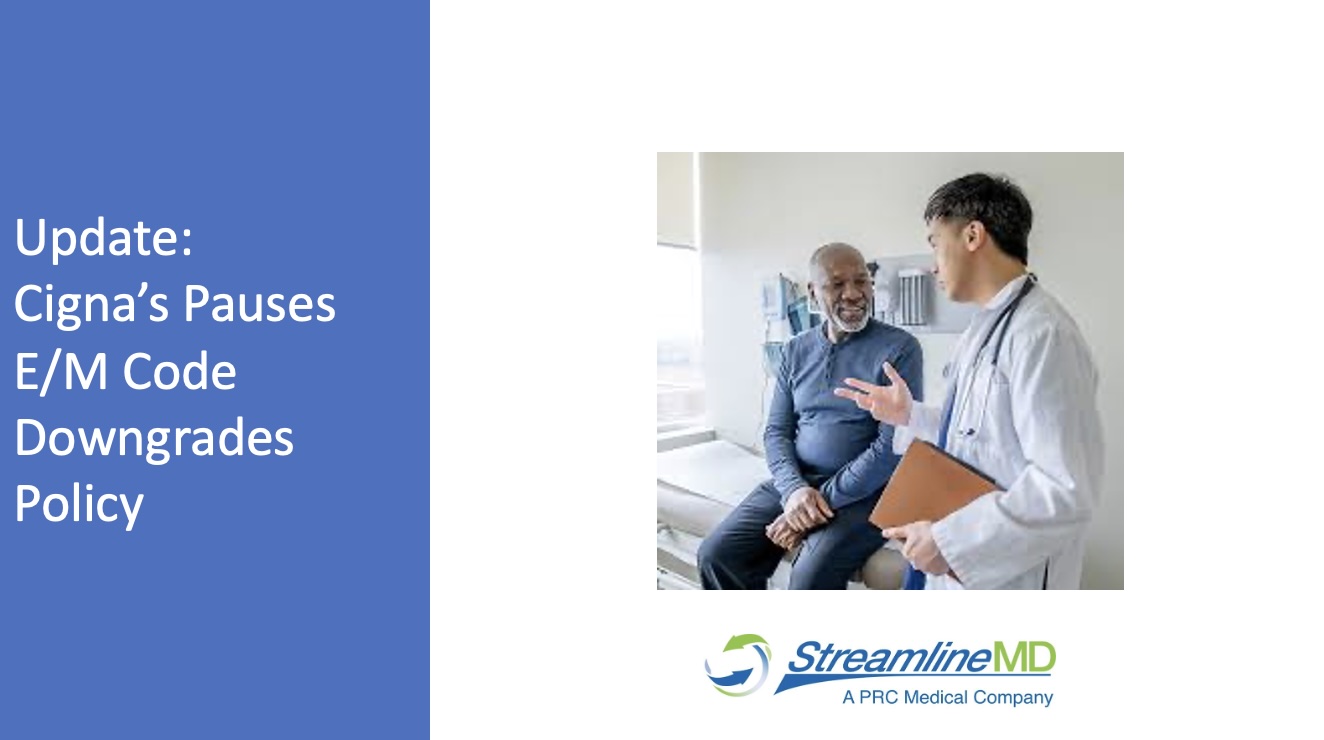The intent of this article is to provide education regarding vascular roadmapping in an effort to understand when it is bundled into therapeutic treatment, when it is appropriate to bill, and the importance of including supporting medical necessity in physician documentation.
Background
When a new CPT code is established or a current code is revised, it is vetted through specialty societies prior to submitting to the AMA/Specialty Society RVS Update Committee (RUC, est. 1992).
During the RUC process, the typical case is evaluated by pre, intra & post service work which includes roadmapping for therapeutic vascular procedures. The AMA sends out surveys to specialists performing procedures being evaluated to establish standard of care best practices. WRVUs are ~51% of TRVU for each CPT code. (See the following link for RUC details).
For a deep dive, visit: RVS Update Committee (RUC) | American Medical Association (ama-assn.org)
What is Roadmapping?
When performing vascular angiography, followed by therapeutic treatment during the same session, there can be selective or non-selective catheter placements with angiography to determine the exact vessel(s) to be treated. This work is considered Roadmapping.
Proper Coding for Roadmapping
Some CPT code descriptors specifically state roadmapping is included in the CPT code and not separately billable, such as the vascular embolization and occlusion codes series 37241-37244. This is also true for the Lower Extremity Revascularization codes, 37220-37235.
In addition to the directives in the surgical section of CPT, the radiology 70000 series of codes also address this in the narrative for the RS&I codes as excerpted from CPT below:
“Diagnostic angiography performed at the time of an interventional procedure is separately reportable if:
1. No prior catheter-based angiographic study is available, and a full diagnostic study is performed, and the decision to intervene is based on the diagnostic study, OR
2. A prior study is available, but as documented in the medical record:
- The patient’s condition with respect to the clinical indication has changed since the prior study, OR
- There is inadequate visualization of the anatomy and/or pathology, OR
- There is a clinical change during the procedure that requires new evaluation outside the target area of intervention.
Diagnostic angiography performed at a separate session from an interventional procedure is separately reported.
If diagnostic angiography is necessary, is performed at the same session as the interventional procedure, and meets the above criteria, then modifier 59 must be appended to the diagnostic RSI code(s) to denote that diagnostic work has been done following the guidelines.
Diagnostic angiography performed at the time of an interventional procedure is NOT separately reportable if it is specifically included in the interventional code descriptor.”
Changes for 2023
In 2023 CMS is doubling down on the NCCI edits for diagnostic angiography when performed during therapeutic treatment, same session. Effective 1/1/2023 the following directive has been added to the NCCI manual as follows:
Chapter 5
D12. When a non-coronary percutaneous intravascular interventional procedure is performed on the same vessel at the same patient encounter as diagnostic angiography (arteriogram/venogram), only one selective catheter placement code for the vessel may be reported. If the angiogram and the percutaneous intravascular interventional procedure are not performed in immediate sequence and the catheter(s) are left in place during the interim, a second selective catheter placement or access code shall not be reported. Additionally, dye injections to position the catheter shall not be reported as a second angiography procedure.
D13. Open and percutaneous interventional vascular procedures include operative angiograms and/or venograms which shall not be separately reported as diagnostic angiograms/venograms. The “CPT Manual” describes the circumstances under which a provider/supplier may separately report a diagnostic angiogram/venogram at the time of an interventional vascular procedure. A diagnostic angiogram/venogram may be separately reportable with modifiers 59 or XU if it satisfies “CPT Manual” guidelines, national Medicare guidelines (if applicable), and local MAC guidelines (if applicable). If the code descriptor for a Revision Date (Medicare): 1/1/2023 V-12 vascular procedure specifically includes diagnostic angiography, the provider/supplier shall not separately report a diagnostic angiography code.
If a diagnostic angiogram (fluoroscopic or computed tomographic) was performed before the date of the open or percutaneous intravascular interventional procedure, a second diagnostic angiogram cannot be reported on the date of the open or percutaneous intravascular interventional procedure unless it is medically reasonable and necessary to repeat the study to further define the anatomy and pathology. Report the repeat angiogram with modifiers 59 or XU. If it is medically reasonable and necessary to repeat only a portion of the diagnostic angiogram, append modifier 52 in addition to modifiers 59 or XU to the angiogram CPT code. If the prior diagnostic angiogram (fluoroscopic or computed tomographic) was complete, the provider/supplier shall not report a second angiogram for the dye injections necessary to perform the open or percutaneous intravascular interventional procedure.
Chapter 9
D40. For vascular embolization procedures (CPT codes 37241-37244) providers/suppliers may separately report selective catheterization CPT codes. However, providers/suppliers shall not separately report non-selective catheterization CPT codes for these procedures. Vascular embolization procedures include associated radiological supervision and interpretation, intra-procedural guidance, road-mapping, and imaging necessary to document completion of the procedure. Angiography may be a separately reportable procedure with modifiers 59 or XU only if it satisfies guidelines for diagnostic angiography included in the “Vascular Embolization and Occlusion” section of the “CPT Manual”, national Medicare guidelines, and local MAC.
Chapter 9 Radiology Services CPT Codes 70000_79999.pdf
The Bottom Line
- CMS is watching for medical necessity when billing diagnostic angiography during the same session as therapeutic treatment.
- Only bill for diagnostic angiography when the following criteria are met.
- No prior catheter-based angiographic study is available, and a full diagnostic study is performed, and the decision to intervene is based on the diagnostic study, OR
- A prior study is available, but as documented in the medical record:
- The patient’s condition with respect to the clinical indication has changed since the prior study, OR
- There is inadequate visualization of the anatomy and/or pathology, OR
- There is a clinical change during the procedure that requires new evaluation outside the target area of intervention.
References: AMA/CPT, CMS NCCI, SIR, ACR




